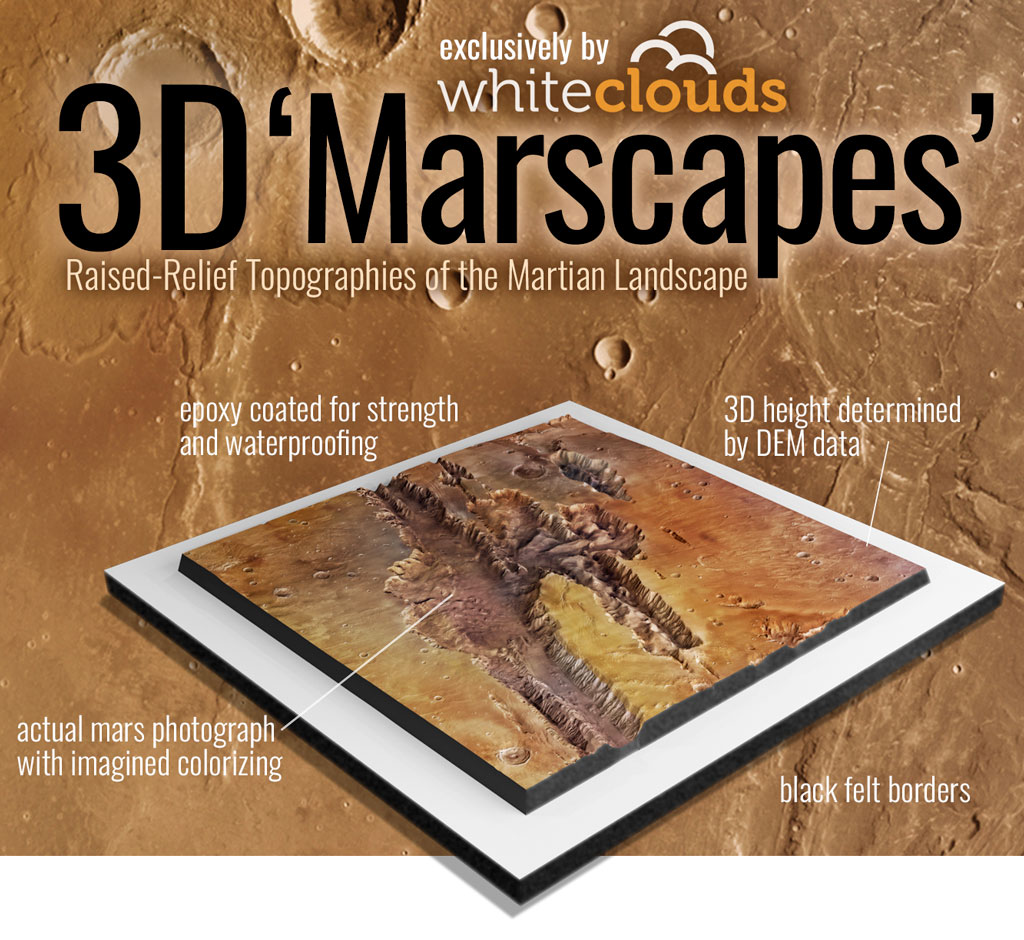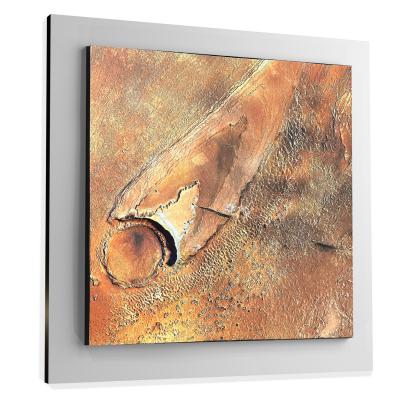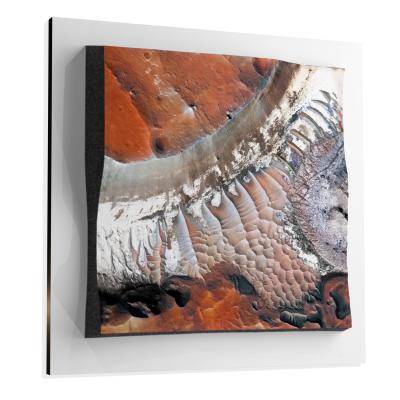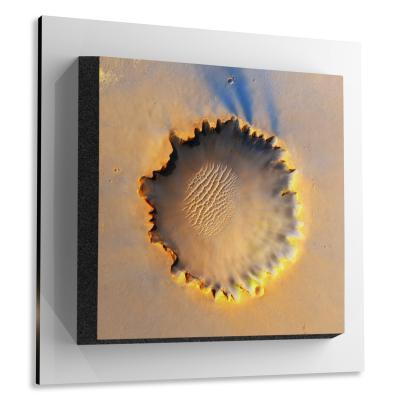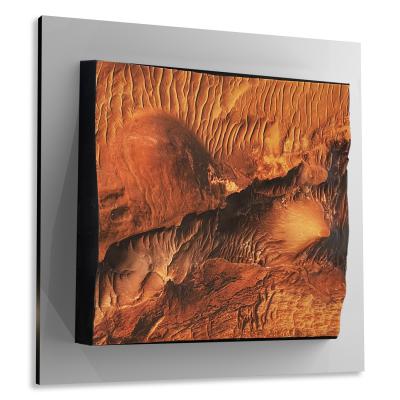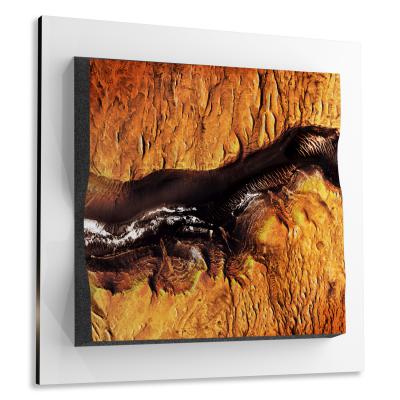Candor Chasm
Candor Chasm
We Build Custom 8K Mars Canvas Prints of Candor Chasm
Did you know we make
custom
8K Mars Canvas Prints

and
3D Marscapes

Candor Chasm
Candor Chasm, one of the most intriguing features on the Martian surface, has captivated the scientific community and general public alike since its discovery. Part of the larger Valles Marineris canyon system, this remarkable chasm is a treasure trove for planetary scientists eager to unravel the mysteries of Mars’ geological history.
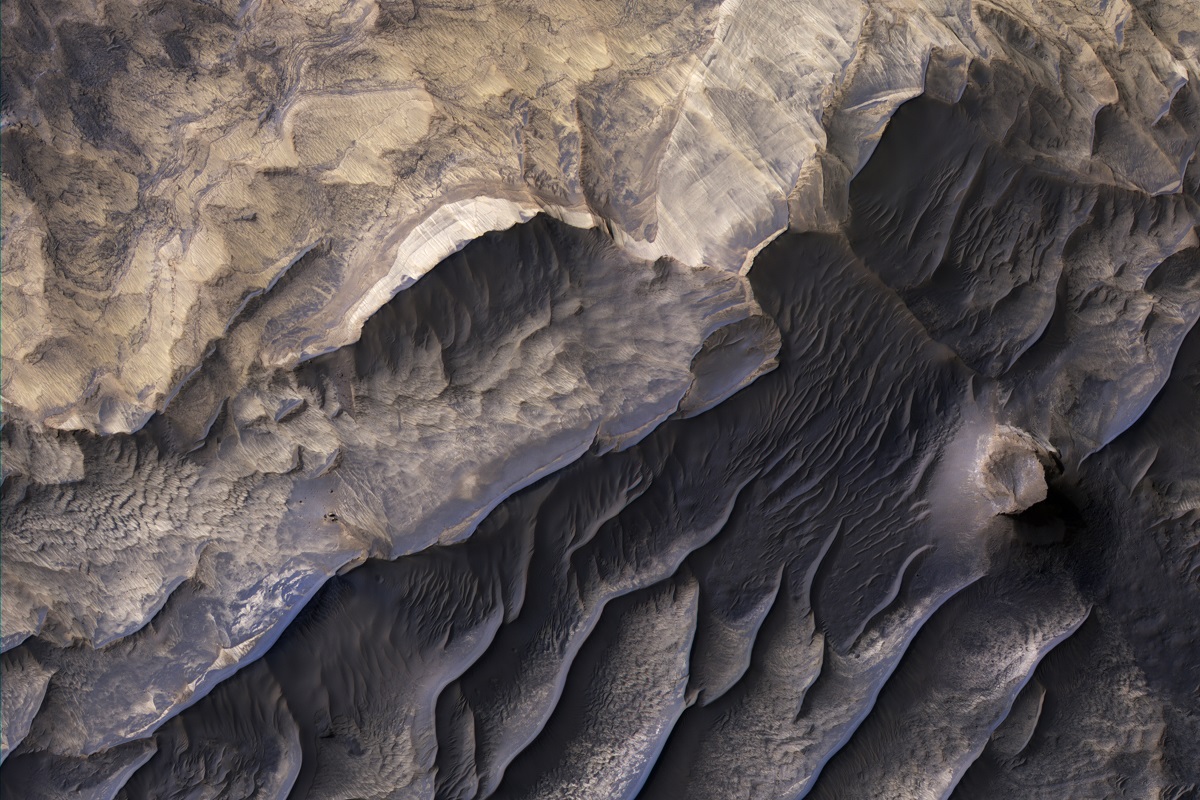 Sandstone in West Candor Chasma
Sandstone in West Candor Chasma
Geographical Location
Candor Chasm is an enigmatic feature prominently nestled within the Tharsis volcanic plateau of Mars. It lies at coordinates around 6.6°S latitude and 74.8°W longitude. Notably, it forms an essential segment of the expansive Valles Marineris, often touted as the “Grand Canyon of Mars,” but vastly larger and deeper. Valles Marineris is an intricate system of canyons that dwarfs any earthly counterpart, and within this system, Candor Chasm lies strategically to the east of Ophir Chasm and to the west of Melas Chasm—both of which are other significant features within this grander topographical complex. Extending for an impressive distance of approximately 800 kilometers, the chasm is far from uniform; it varies in width from a minimum of 7 kilometers to as much as 10 kilometers. Its depth is equally staggering, plummeting anywhere from 5 to 6 kilometers below the plateau that encloses it. The chasm’s remarkable size and its adjacency to other significant geological landmarks amplify its scientific importance. This feature is like a tantalizing chapter in a larger geologic book, offering crucial narrative threads that could help unravel the perplexing story of Mars’ surface and its history.
Advertisement
Sample Marscapes
Geological Composition
The geological constitution of Candor Chasm is a tapestry of interwoven complexities, having evolved through an interplay of various geological forces over billions of years. The foundational rock of this awe-inducing formation is predominantly basaltic, a confirmation to the ancient volcanic processes that once shook the Martian landscape. However, a closer look reveals an intricate stratigraphy that goes far beyond mere basalt. A series of layered sedimentary rocks—comprising sandstones, shales, and other depositional materials—adorn the walls and floors of the chasm. These sedimentary formations suggest not only aeolian (wind-based) activity but also raise the tantalizing possibility of sedimentation through water flow. Advanced infrared spectral analyses have identified a plethora of minerals, including sulfates, silicates, and chlorides. These minerals are not mere passive occupants; they suggest a rich, perhaps even aqueous, geochemical history. The chasm’s walls are a geological tapestry, revealing layers that might correlate with different periods in Mars’ environmental history. These stratified layers could be the geological equivalent of tree rings, each layer representing unique conditions and events, thus making Candor Chasm a living geological archive.
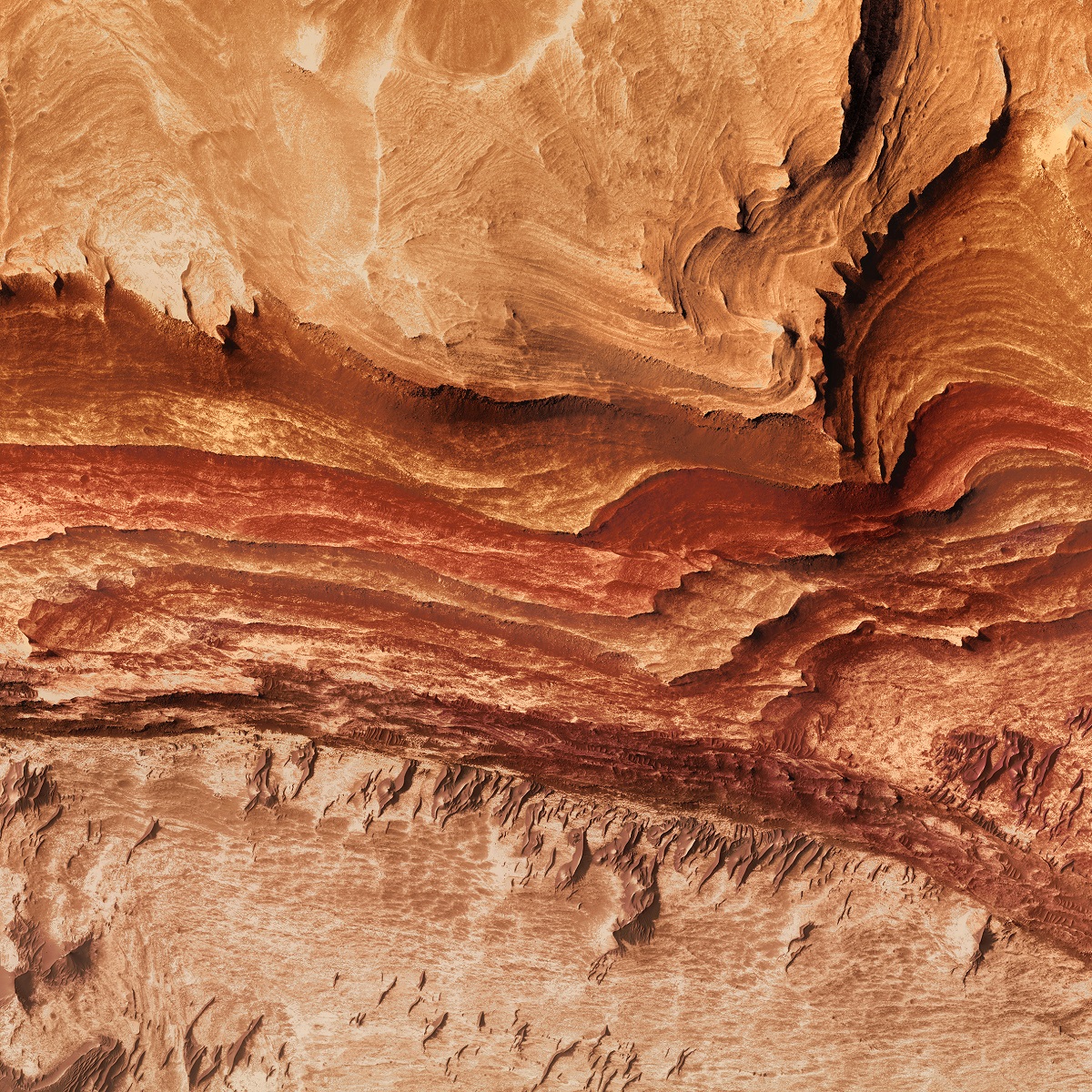 Candor Chasma
Candor Chasma
Significant Discoveries
The realm of Candor Chasm has not disappointed when it comes to paradigm-shifting discoveries. One of the most groundbreaking revelations has been the unearthing of substantial sulfate deposits. The importance of sulfates lies in their usual formation mechanisms—they commonly precipitate in the presence of water. This fact opens up fascinating avenues of speculation about past aqueous environments that may have existed, perhaps even nurturing primitive life forms. A second compelling find is the existence of visibly layered terrains within the chasm. These stratified layers, discernible even from orbital surveys, could serve as a geological chronicle, offering precious insights into the climatic conditions that Mars has cycled through over eons. Furthermore, the landscape bears the scars of substantial erosive forces, seen in the form of wind-etched features and potentially water-induced sculpting. This provides another layer—both literally and metaphorically—of complexity to the chasm’s geological repertoire, fueling further scientific curiosity.
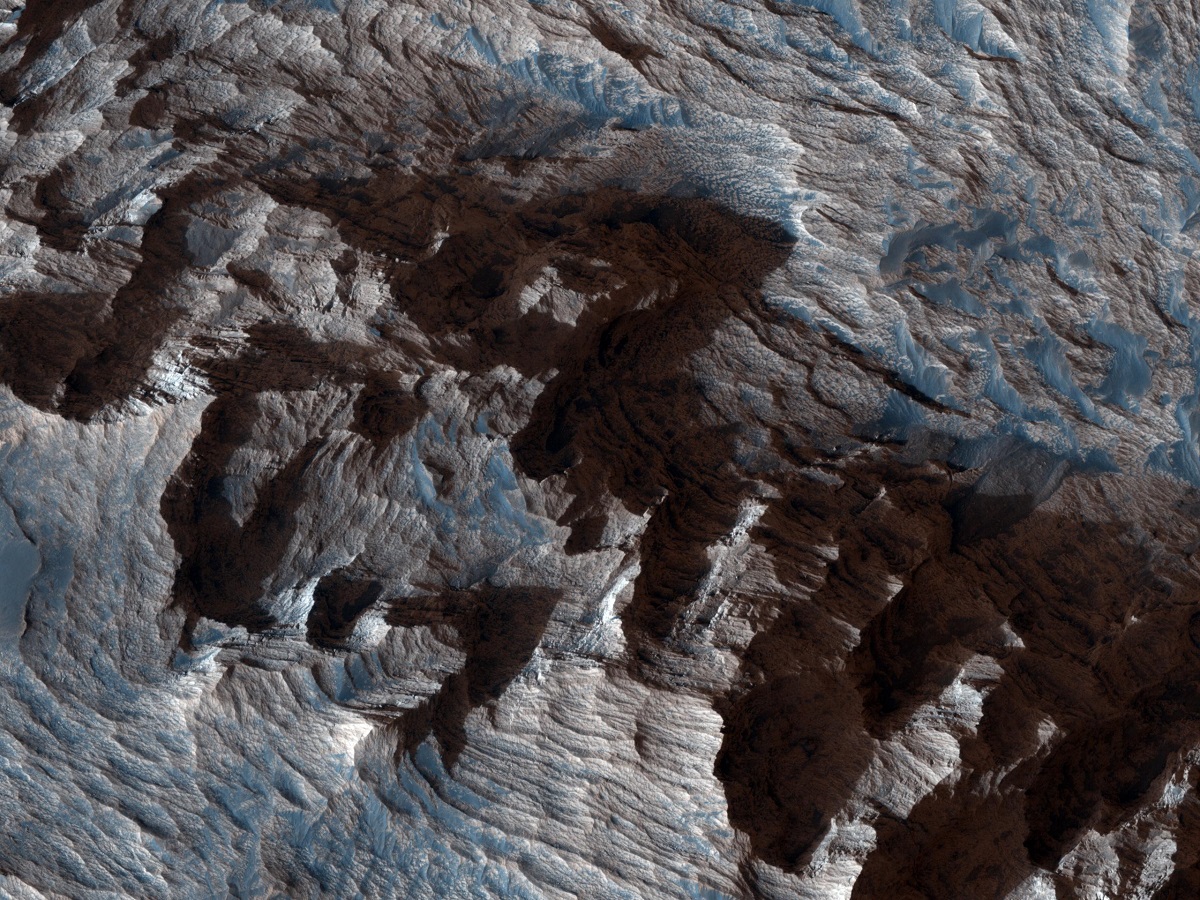 Layered Bedrock in Candor Chasma
Layered Bedrock in Candor Chasma
Scientific Missions
Candor Chasm has been a hotspot for scientific scrutiny, drawing the attention of a suite of robotic missions that have orbited Mars. NASA’s Mars Reconnaissance Orbiter (MRO) has played a pivotal role, utilizing its High-Resolution Imaging Science Experiment (HiRISE) camera to capture stunning, highly-detailed images. Concurrently, its Compact Reconnaissance Imaging Spectrometer for Mars (CRISM) has revealed key mineralogical aspects of the chasm. Complementing this, the European Space Agency’s Mars Express has contributed significantly with its Mars Advanced Radar for Subsurface and Ionospheric Sounding (MARSIS) and High-Resolution Stereo Camera (HRSC). These instruments have provided critical data on both topography and mineralogy. These collaborative efforts between different missions lay a comprehensive groundwork for what we might expect from future endeavors, potentially involving landers and rovers equipped for more targeted in-situ exploration.
Geomorphological Features
Candor Chasm presents a geomorphological landscape that is as visually stunning as it is scientifically perplexing. The towering, precipitous canyon walls are a textural feast, filled with scars, fissures, and outcroppings indicative of vigorous erosive processes. The chasm’s floor is not a monolithic flatland but a captivating array of distinct terrains—dunes intermingle with jagged rock outcrops and softer sedimentary beds, suggesting a tumultuous geological past. One of the most intriguing aspects is the evidence of landslides and rockfalls. While these features point to a much slower pace of change than what we’re accustomed to on Earth, they nonetheless indicate that Candor Chasm is not a static feature frozen in time but rather a dynamic landscape, still undergoing alterations, even if at a geological pace.
Candor Chasm serves as a captivating chapter in the larger story of Mars’ geological history. Its intricate geological composition, significant discoveries, and unique geomorphological features make it a focal point for scientific inquiry. The data gathered from various missions not only enhance our understanding of this particular chasm but also contribute to the broader scientific goals of deciphering Mars’ geological and potentially hydrological history. As technology advances, future missions could provide even more detailed insights into this Martian wonder, continuing to inspire both scientific investigation and human imagination.
Check out our 3D Mars Learning Center for more information on Mars and Candor Chasm. You can also learn more at: NASA Mars Exploration.
More About Mars
Contact us today to learn more about our 3D services and how we can help you achieve your goals.
